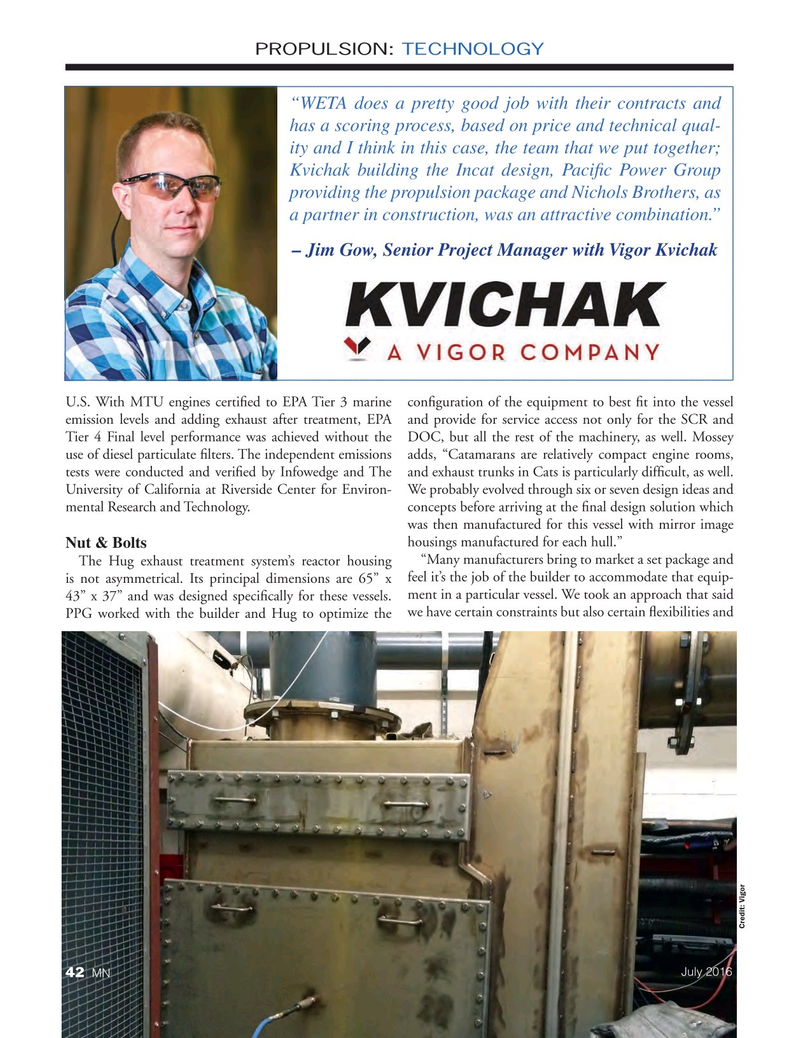
Page 42: of Marine News Magazine (July 2016)
Propulsion Technology
Read this page in Pdf, Flash or Html5 edition of July 2016 Marine News Magazine
PROPULSION: TECHNOLOGY “WETA does a pretty good job with their contracts and has a scoring process, based on price and technical qual- ity and I think in this case, the team that we put together;
Kvichak building the Incat design, Paci? c Power Group providing the propulsion package and Nichols Brothers, as a partner in construction, was an attractive combination.” – Jim Gow, Senior Project Manager with Vigor Kvichak
U.S. With MTU engines certi? ed to EPA Tier 3 marine con? guration of the equipment to best ? t into the vessel emission levels and adding exhaust after treatment, EPA and provide for service access not only for the SCR and
Tier 4 Final level performance was achieved without the DOC, but all the rest of the machinery, as well. Mossey use of diesel particulate ? lters. The independent emissions adds, “Catamarans are relatively compact engine rooms, tests were conducted and veri? ed by Infowedge and The and exhaust trunks in Cats is particularly dif? cult, as well.
University of California at Riverside Center for Environ- We probably evolved through six or seven design ideas and mental Research and Technology. concepts before arriving at the ? nal design solution which was then manufactured for this vessel with mirror image housings manufactured for each hull.”
Nut & Bolts “Many manufacturers bring to market a set package and
The Hug exhaust treatment system’s reactor housing is not asymmetrical. Its principal dimensions are 65” x feel it’s the job of the builder to accommodate that equip- 43” x 37” and was designed speci? cally for these vessels. ment in a particular vessel. We took an approach that said
PPG worked with the builder and Hug to optimize the we have certain constraints but also certain ? exibilities and
Credit: Vigor
July 2016 42 MN
MN July16 Layout 32-49.indd 42 6/20/2016 4:14:17 PM

 41
41

 43
43
